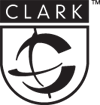
The Larochelle Lab
at Clark University
Ellen Durand

Research background: My research is based on Dr. Judah Folkman’s discovery that angiogensis, the formation of new blood vessels, is necessary for tumor growth. These new vessels supply tumors with nutrients necessary for development and proliferation. This discovery prompted a break-through in cancer therapy: a class of drugs called angiogenic inhibitors. The purpose of these drugs is to block angiogensis, thus starving the tumor of a nutrient supply. One mechanism by which these drugs work is to target endogenous angiogenic promoters, such as Vascular Endothelial Growth Factor (VEGF), and prevent them from binding their normal receptors. Unfortunately, although anti-angiogenic drugs are effective in reducing the size of tumors, they can cause many serious side effects such as severe hypertension.
Thesis/summer work: There are currently several FDA approved angiogenic inhibitors and because they have been successful at fighting cancer, there is an urgent need to reduce, if not eliminate, potentially life-threatening side effects. My thesis project is focused on combination treatments of a certain FDA approved angiogenic inhibitor and endostatin, an endogenous protein derived from type XVIII collagen. Endostatin, which was discovered in Dr. Folkman’s lab, is known to negatively regulate angiogensis. Its repressing effects on cancer are seen in Down Syndrome patients who possess an extra copy of chromosome 21 and therefore 1.6 times the normal amount of endogenous endostatin. These patients rarely exhibit any type of cancer besides leukemia and testicular cancer. It is hypothesized that endostatin also lowers blood pressure; Down Syndrome patients do not experience hypertension. Therefore, we hypothesized that a combination treatment of endostatin with an angiogenic inhibitor could potentially increase the effectiveness of fighting off tumor growth while decreasing the hypertensive effect of the drug alone. In order to test this, a blood pressure experiment was run with 72 mice in 4 groups: control, drug alone, endostatin alone, and the combination (test) group. Blood pressures were taken 3 times a week using a non-invasive tail cuff system, which recorded readings on a computer.
In addition to in vivo studies, we are currently working on the mechanism by which we believe endostatin operates. Initial tests and assays led us to believe endostatin is regulating blood pressure through Nitric Oxide (NO) pathways. NO is a key signaling molecule and important regulator of blood vessels. This regulation includes blood vessel dilation.
Current work: The next stage of the project is to test the mechanism by which we believe endostatin works. In order to do this we are conducting another in vivo study using endostatin KO mice and eNOS (nitric oxide synthase) KO mice to determine the exact cause of endostatin’s hypotensive effects.
Outside of lab: During the summer I felt as if time outside the lab didn’t exist. Now that I’m back at Clark I’m participating in cross country and hopefully track or softball during the spring season. I also enjoy watching the Patriots and the Red Sox when they’re not breaking my heart.
Awards: Fuller Fellowship, American Cancer Society, 2007 for $4,000.
Links | About Prof Larochelle
Clark Biology Dept | Clark University